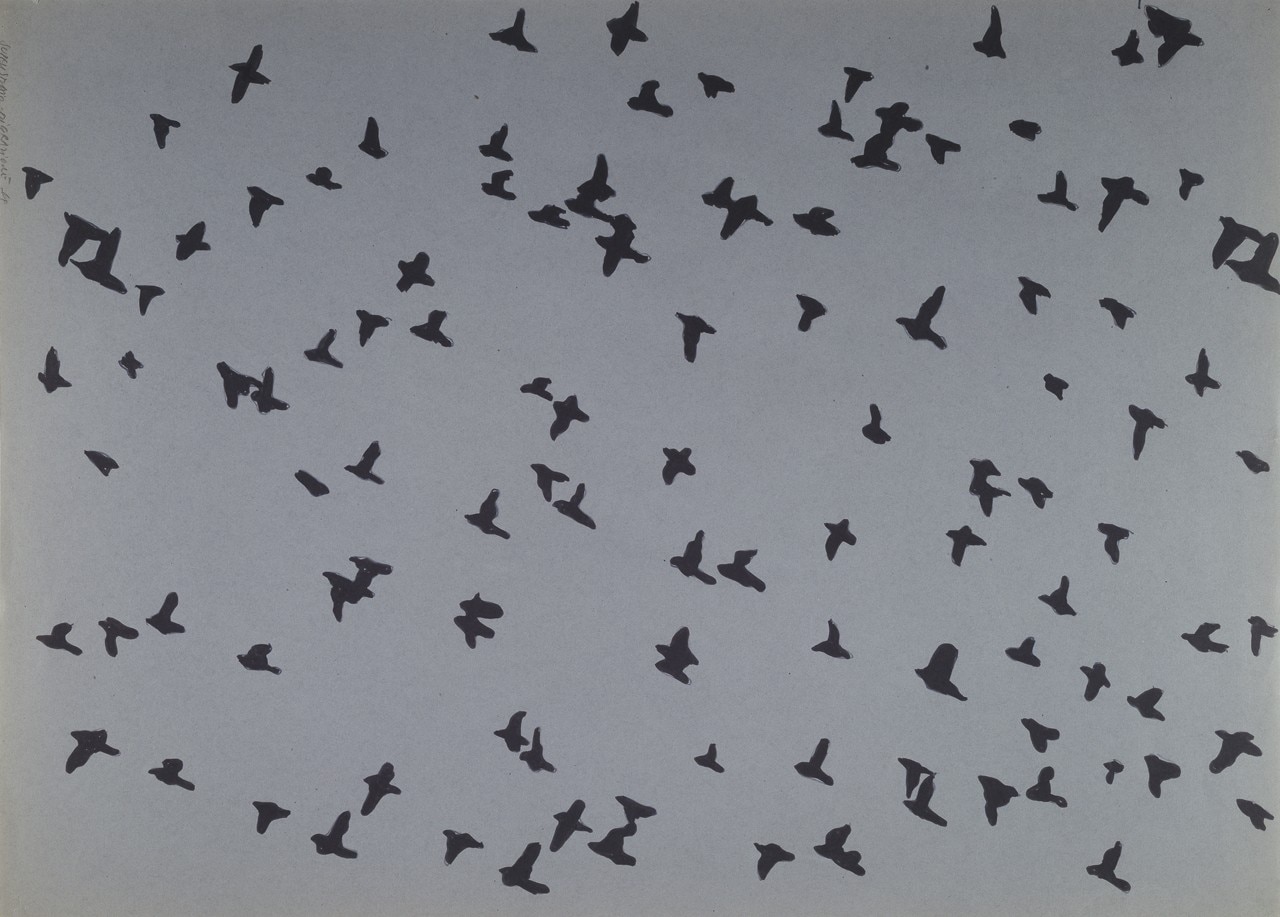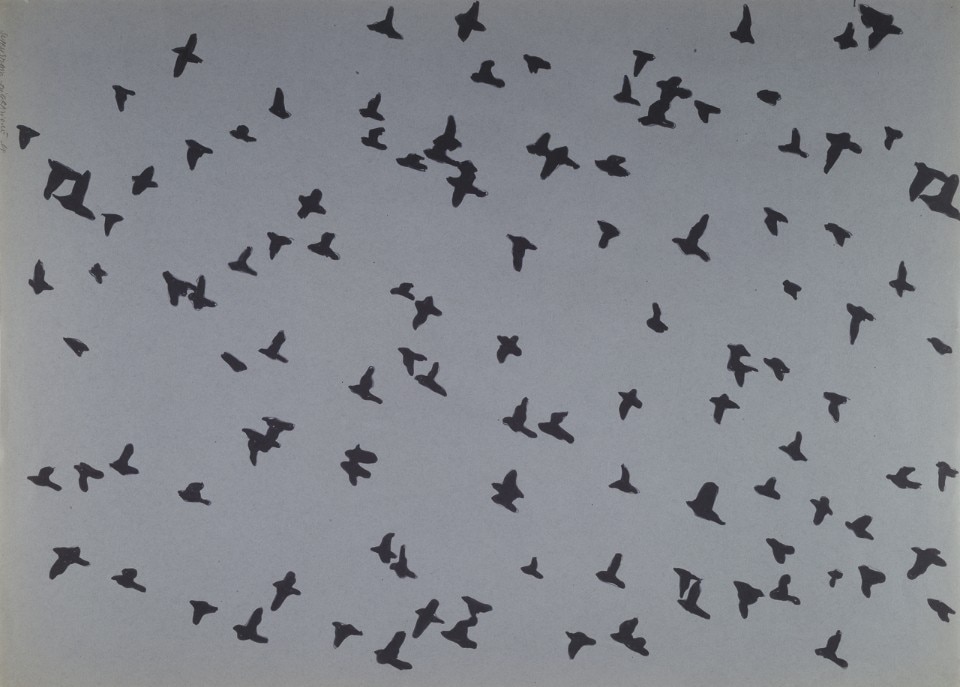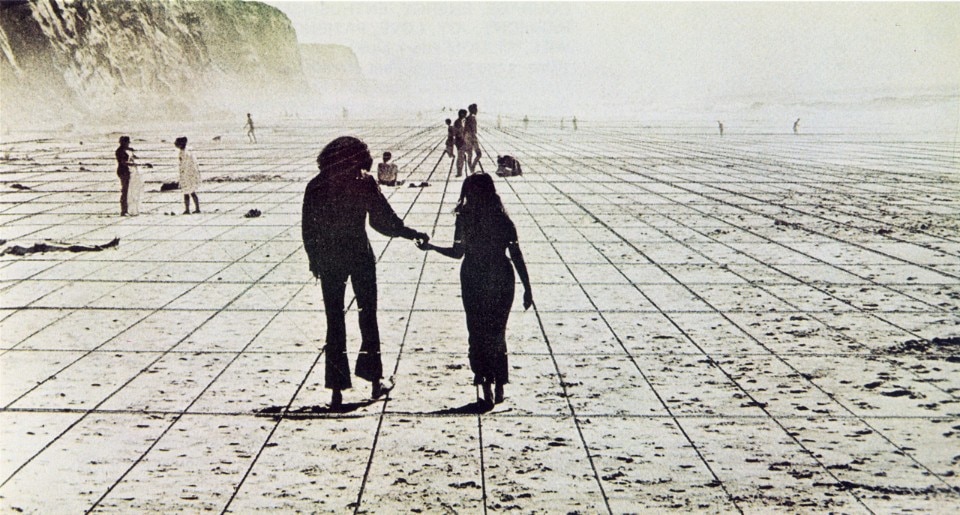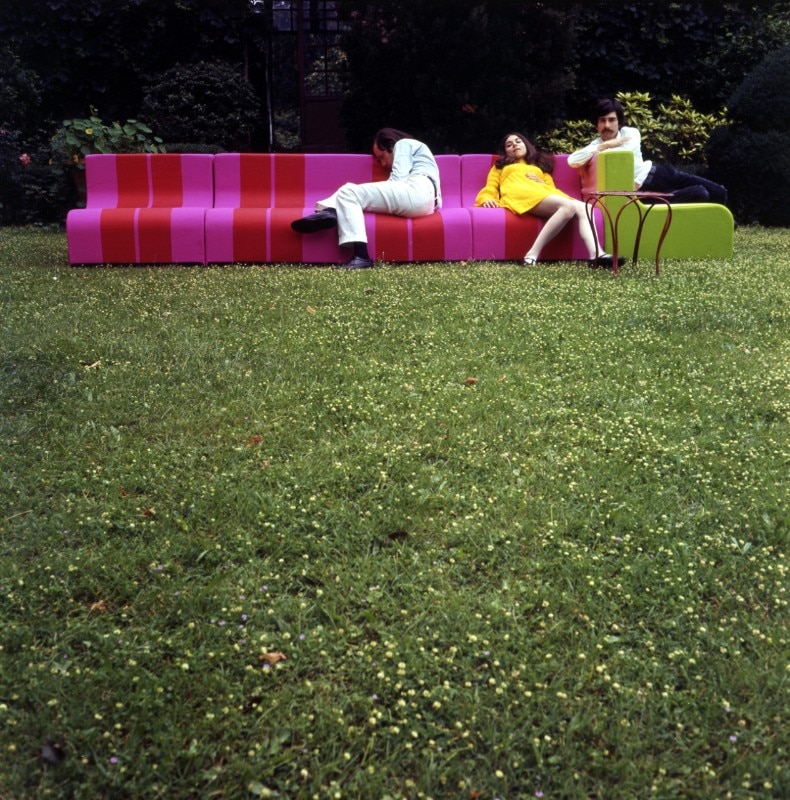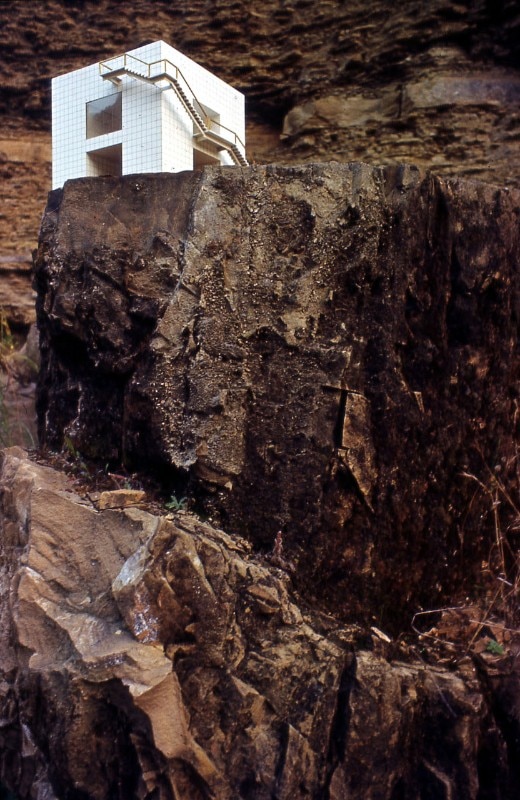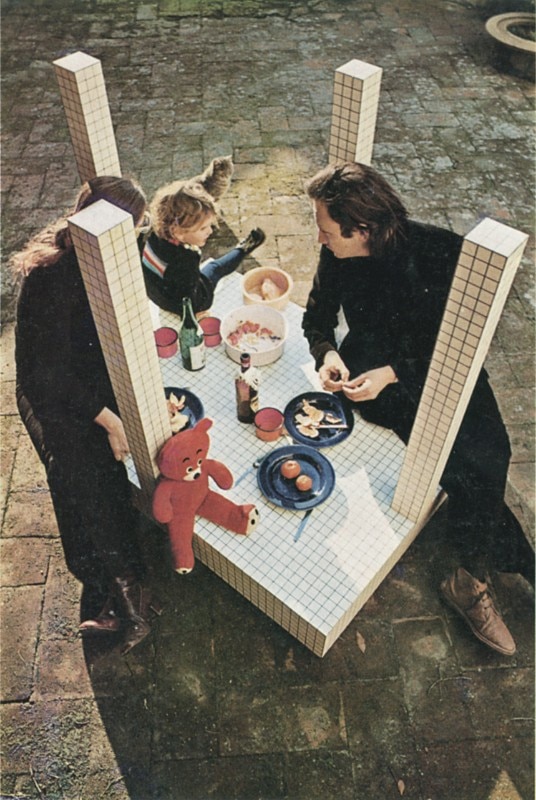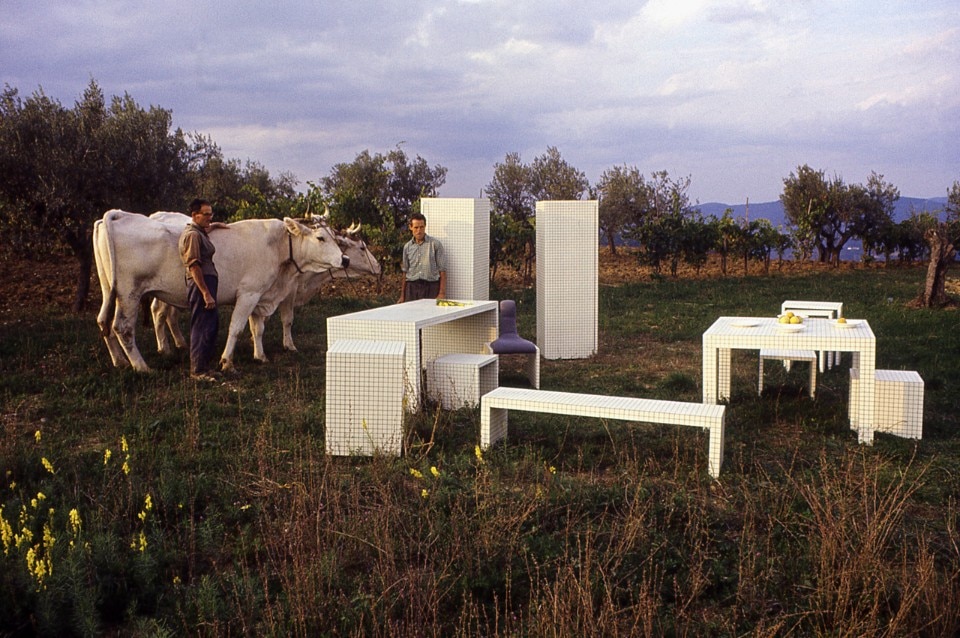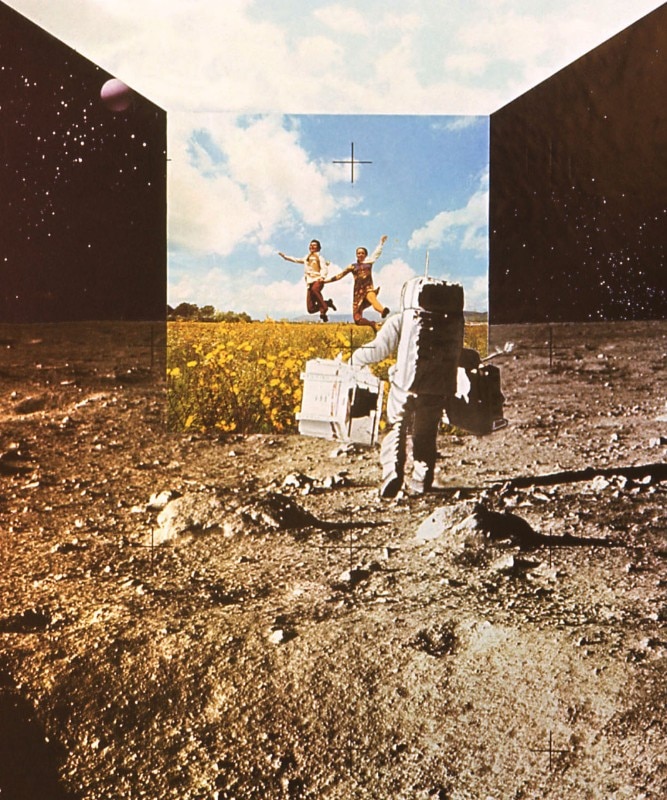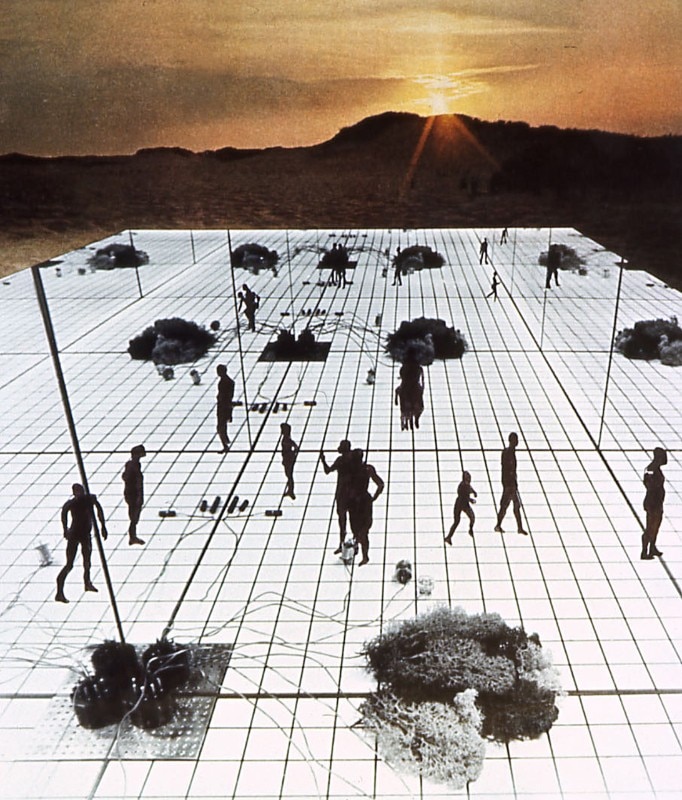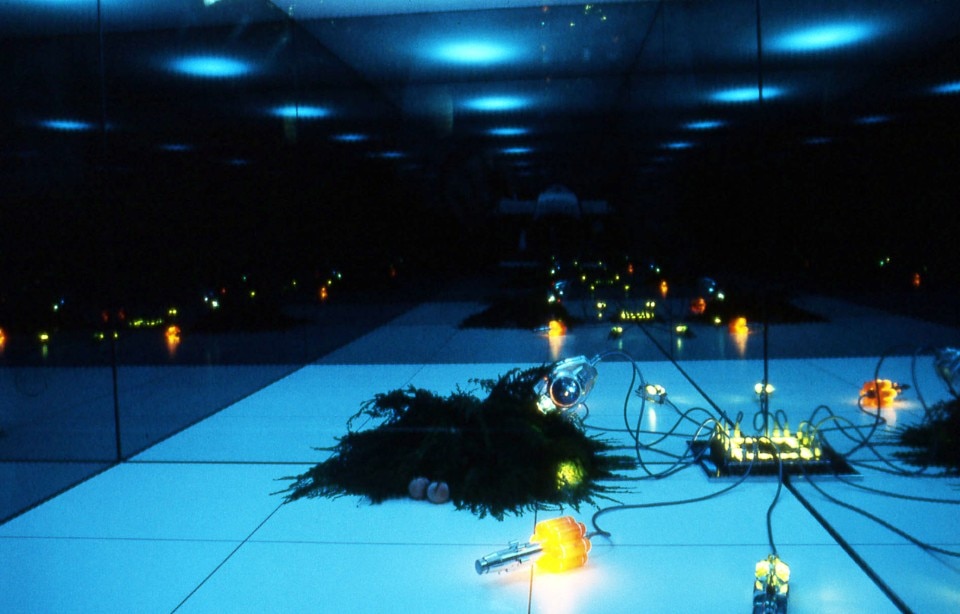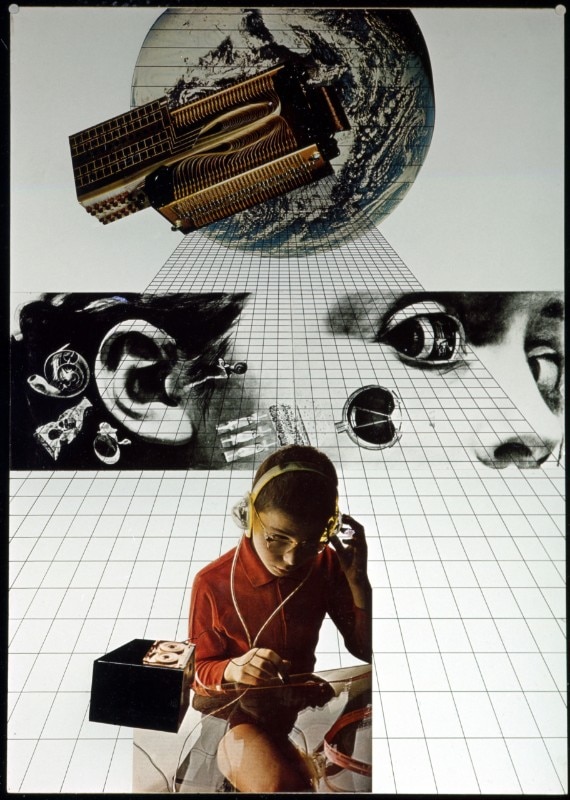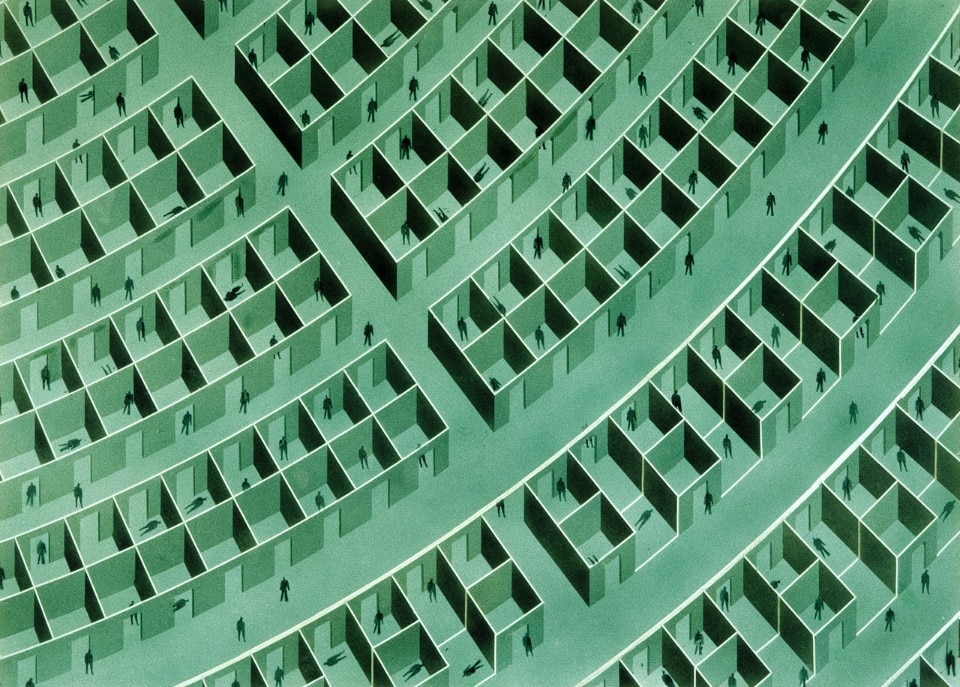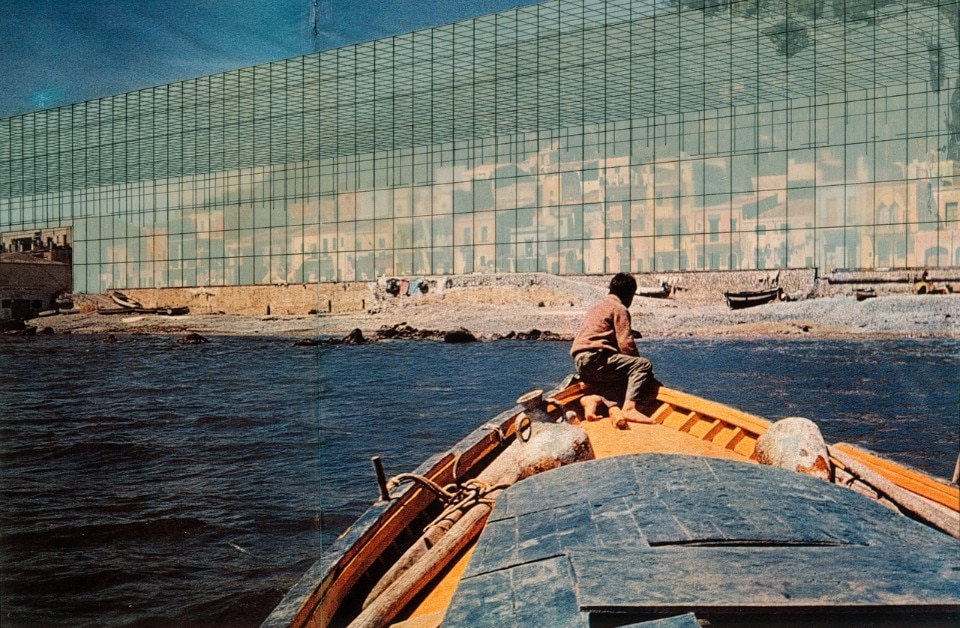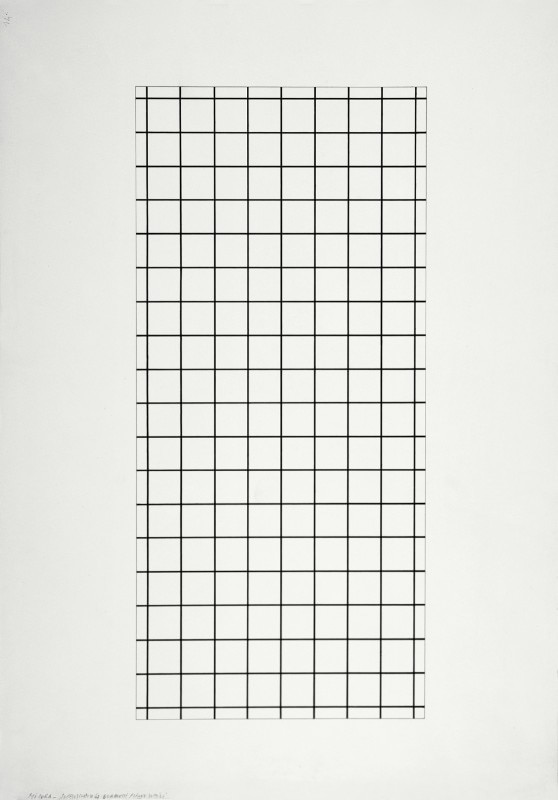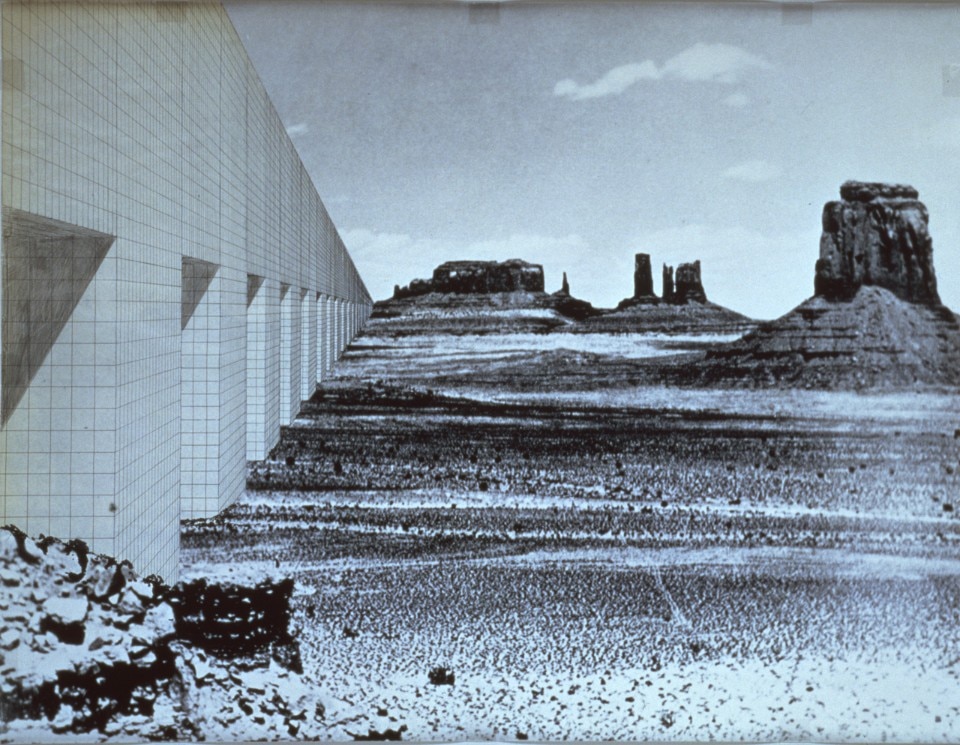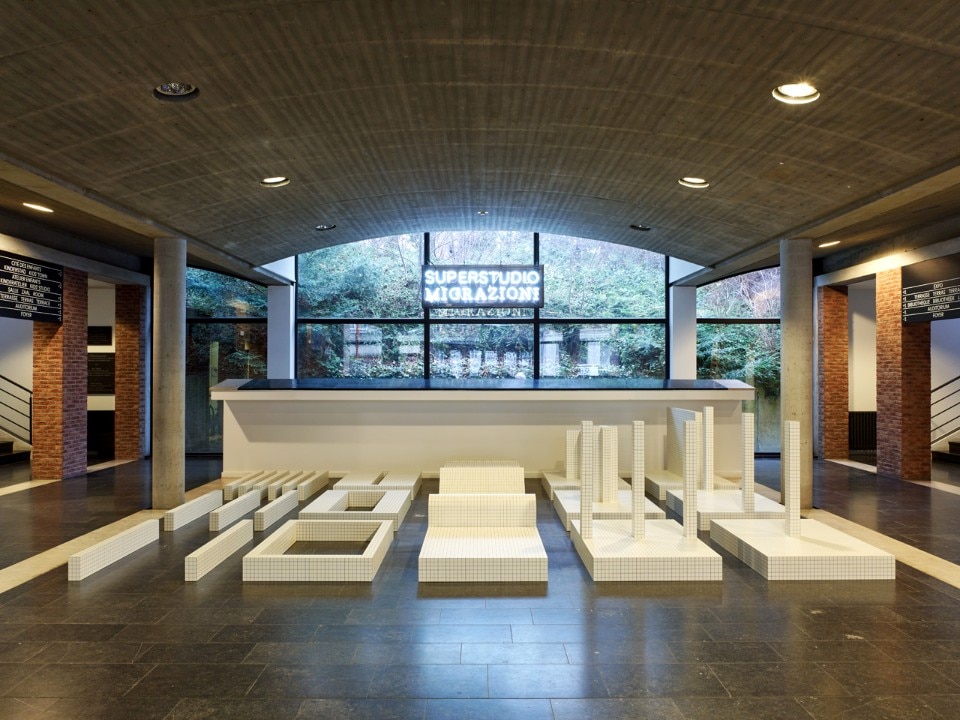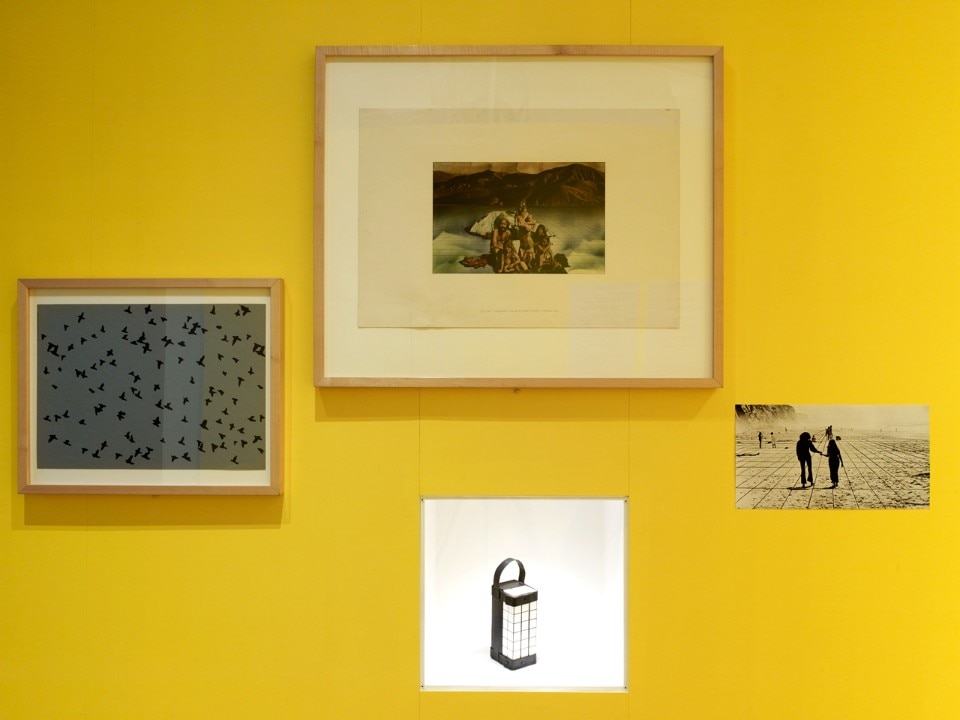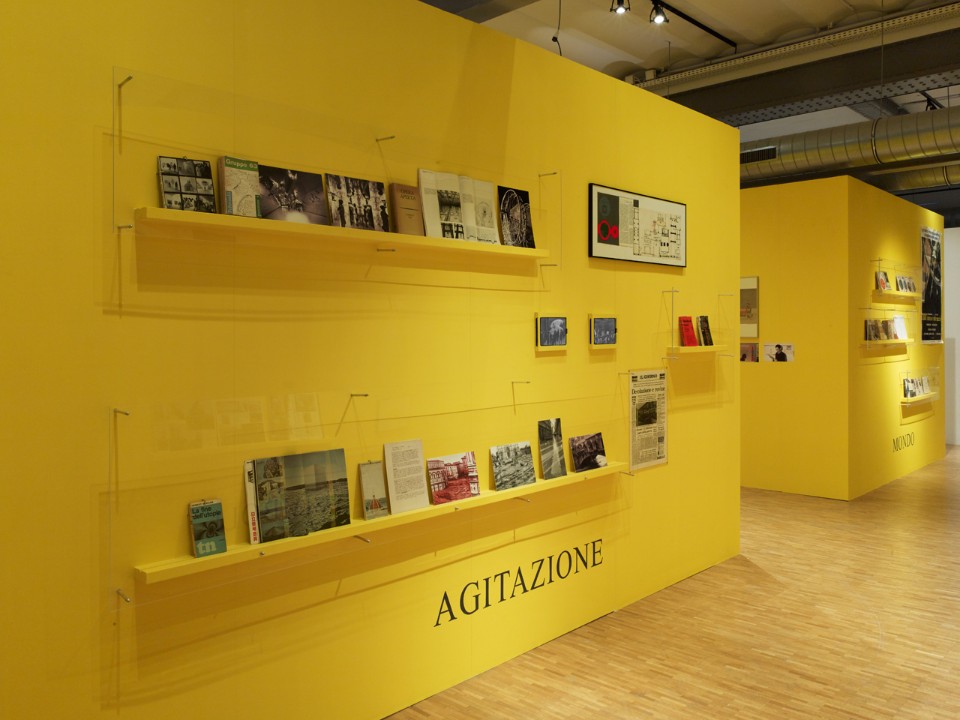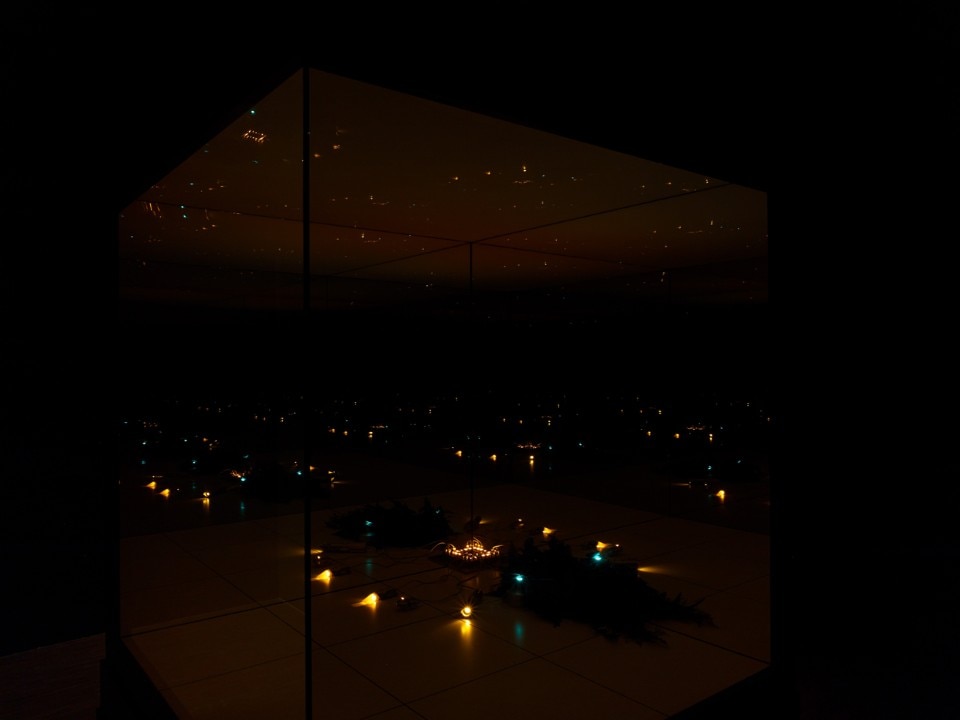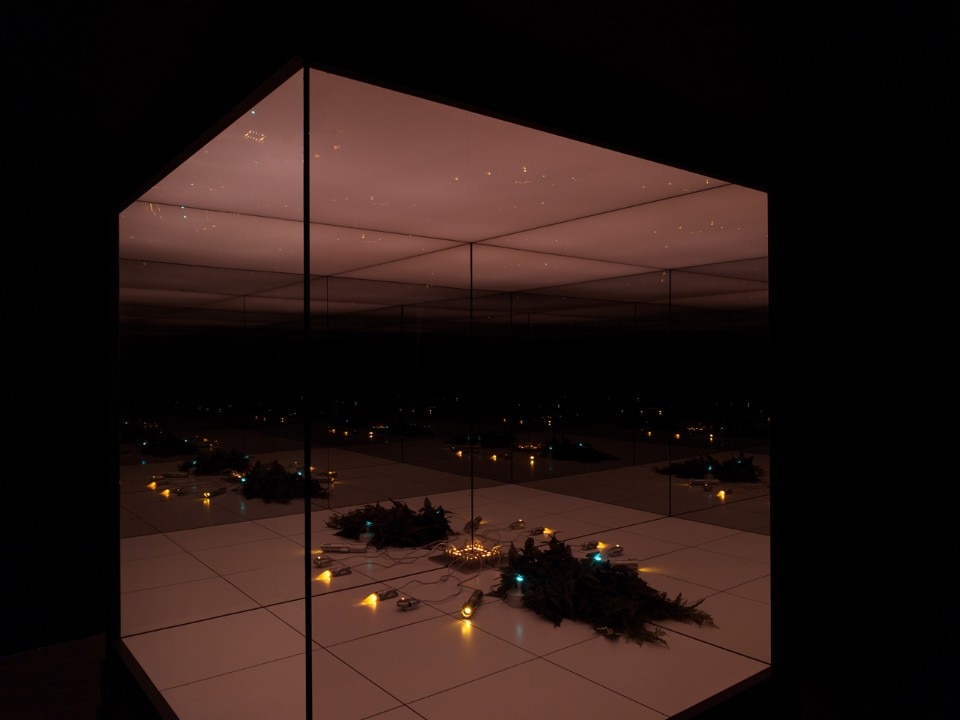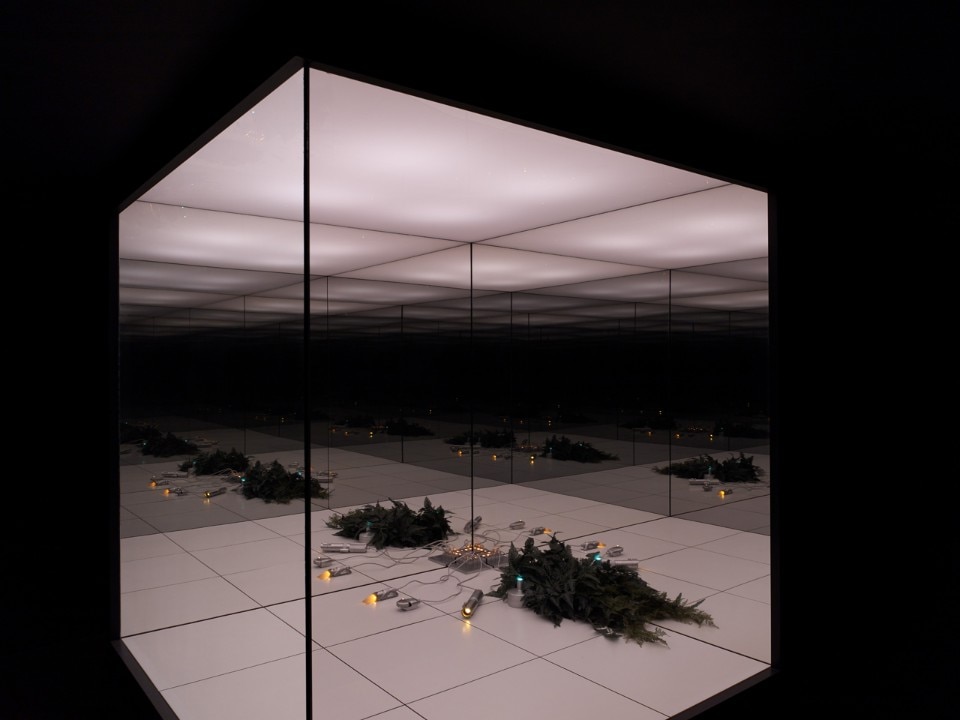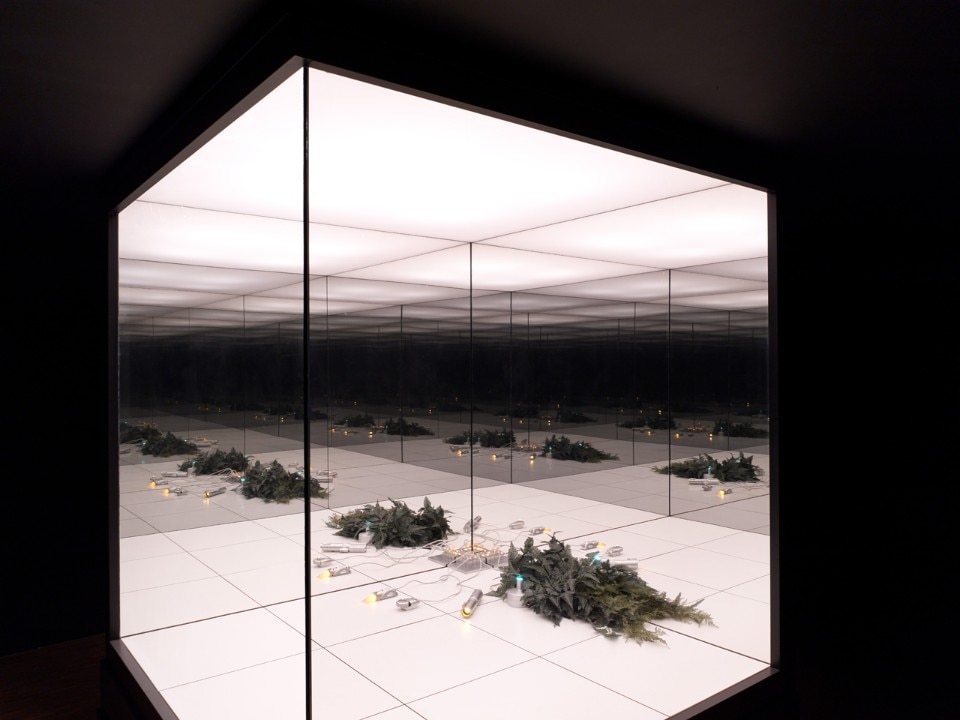I gave some lectures titled “A public Suicide”, “Fundamental Facts: Life, Ceremony, Death versus Architecture”, “The 14th Ideal City” (…) The Architectural Association and the British scene are vividly disturbed by such lectures: some say I’m a swindler (please accept your own part in such title); some others say they have never seen someone using such vocabulary in architecture. (…) Honestly, it’s such a struggle, and I didn’t expect that. Most of all, I am constantly so tense, because I’m always afraid to mess all things up for the studio and for me, and around here there’s plenty of people expecting nothing else than that..
(Adolfo Natalini to Superstudio, London Report 2, 22 January 1971. Original text: Italian)
As the whole world was getting ready to salute its success by 1972 — in the legendary exhibition Italy: The New Domestic Landscape at MoMA New York — to know it at least, to iconize it for sure, in its sacred features of radicalism, provocation and almighty systematic grids, Superstudio was in fact at the top of its receptive opening, of its potential, of its multiverse nature, a transversal syncretism of stories, starting from those of its members: Adolfo Natalini, a practicing painter; CristianoToraldo di Francia, progressively discovering truths through the act of writing, Roberto e Alessandro Magris, Alessandro Poli; all of them were architects, including Piero Frassinelli, who also walked the paths of cultural anthropology.
As we enter the narrative spaces of the Superstudio Migrazioni exhibition at CIVA Bruxelles, curated by Emmanuelle Chiappone-Piriou, we access at the same time the contemporary dimension of sthose stories and reflections that make Superstudio a designer and an interpreter of our times, even more than it had been for the age of the New Italian Landscape.
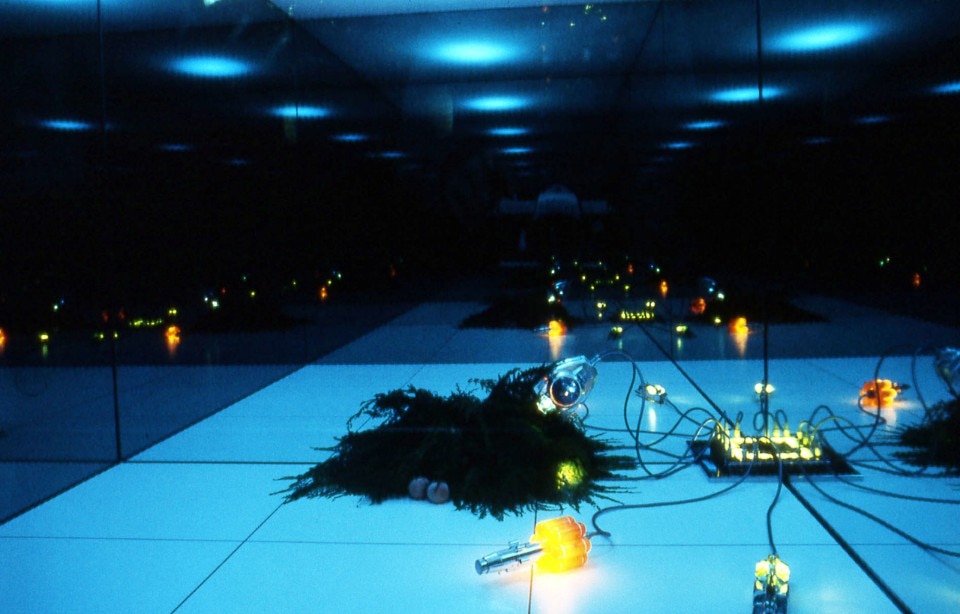
“Superstudio is a self-funded organization for architectural studies and research, all [partners] have a strong architectural knowledge and a common interest in architecture. An architecture which is more and more light, soft, or conceptual. 60% of our time is spent in works of industrial design, interior and architectural design; 40% in theoretical research. Half of the revenues produced through real work is re-invested in research (and here is where, depending on the audience, I might add a small speech on the subdivision of our revenues on a communitarian basis, according to the principle ‘from each one according to their possibilities, to each one according to their needs’). The studio is currently engaged in a research on building components — some sort of general catalogue based on the recycling of existing products — and another one on fundamental acts: life, ceremony, death.”
By the end, everyone is crying, or at least is heavily impressed by such idealistic conduct…
(Adolfo Natalini to Superstudio, London Report 5, 5 February 1972)
The Migrazione picture was conceived by Superstudio in 1969 as a graphic pattern for screen printed plastic laminates (realized by Abet), and it gave no lesser contribution than the celebrated Monumento Continuo to the group’s obsessive quest for a unique design to homogeneously systematize all existing shapes, fluxes and actions. In the words of the curator, Migrazioni is a figure of interpretation representing Superstudio as a whole, in its migratory dimension: the migration of the studio members scattered across Europe and the USA — tying connections at the AA Summer Schools, teaching and exhibiitng; the migration represented by that great cerebral work of elaboration and global diffusion of ideas, characterizing the studio action; most af all, finally, the perception of human life on Earth as of something in transition towards the realm of constant motion, a condition which was becoming more and more a matter of environment, of atmosphere, the building matter of our habitat, as in fact it is today, in the homogeneity of fluxes and technologies characterizing our contemporary dimension.
Superstudio, Supersurface. An alternative model for life on the earth, 1972. 16 mm, 9’40’’. Archivio Superstudio.
We all realized, in our fairly long career as architects, that people no longer know how to design their own lives.
(Gian Piero Frassinelli, 2020)
The work by Superstudio is about giving sense to space, in times when space is increasingly made of communication and signs which could set directions for our lives: Superstudio aims instead to oppose an action of perception, reinterpretation, of intended systematization through that great cerebral work we just mentioned, rather than through that provocative apparatus, made of pop bewilderment, we are used to know. Superstudio absorbs a language matter from a world that speaks the language of magazines, to give this matter back transfigured into the language of collage, of those images — proper icons to be precise — that will generate a global obsession, stemming from the inside of the Studio to later affect an entire generation.
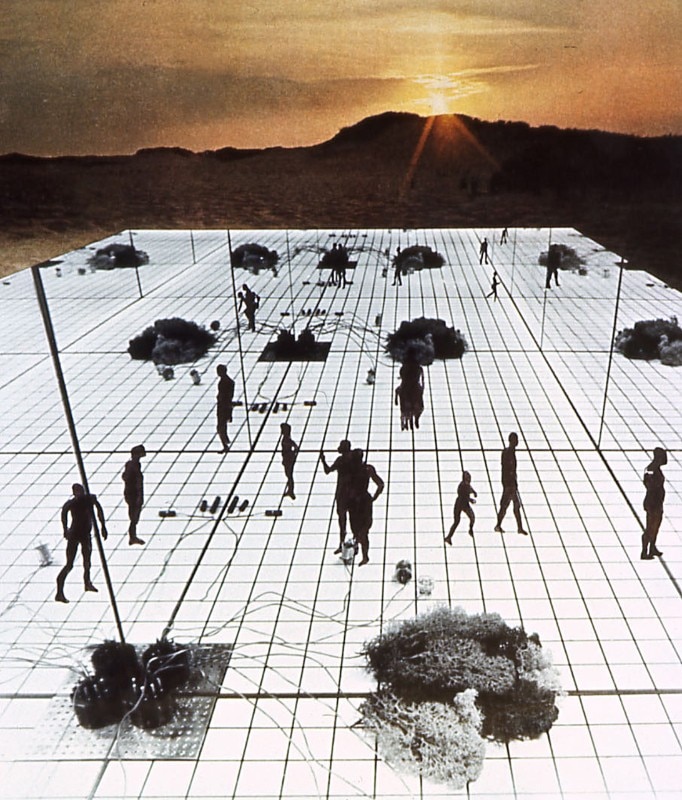
I’m often invited to parties where I meet people like Jencks, for instance, Cook, Stirling, Boyarsky, Pawley, Banham, Frampton, Rykwert, Colquhun,...and Price. Long story short, the full British intelligentsia. The atmosphere is always electric: everyone wants to show ‘oh-how-smart-I-am’. I try not to disclose too much, and then Cook comes and says I am ‘encapsulated in your own ideas’ ... and I feel like laughing, because I really feel stuck in the middle of some intelligentsia’s Ring a Ring o' Roses, of some funny closed circle where everyone is quoting himself, recurrently, searching for connections to just increase the numbers of his squad. I do not actually know where I should find any connection between reality and all this. It’s a lot like staying and working in Bellosguardo [Superstudio office address], in the end.
(Adolfo Natalini to Superstudio, London Report 2, 22 January 1971)
As it gradually strengthened its identity as a studio (with commissions, bureaucratic issues, existential bugbears, the daily quest for endorsements), the Florentine group was growing more and more as Super, as an object of attention and a node of influences, a bridge between an explosive background of references — evocatively narrated in the ideal libraries of the single group members, shown at the beginning of the CIVA exhibition — and a bustling scene, where different subjects search for their own spot within the “Second Coming of Architecture”, as Rem Koolhaas names it in a letter to Natalini. Dialectically pairing with Archigram, powerfully inspiring Hans Hollein, fascinating swarms of students across London and the United States, Superstudio was actually friends with Koolhaas himself: the “two” would share in fact a common fight against the burden of theoretical dust affecting their European origins, misleadingly lifted up in the air for a moment, leaving some room for intuitions about a possible way to blow up the bank and re-write the way of thinking about the space we live in, starting from the global-scaled perpetuum mobile that very space had just become.
I am afraid to irritate you with the continuing development of my Anglo-Saxon paranoia, but, although I feel much more sympathy for American than for English, I still suffer the same (intellectual) frustration here [Ithaca, Cornell University, NdR]; our European seriousness complicatedness, conceptual and ideal hang-ups explode here in a strange, sucking vacuum which creates an instant exhaustion; in a way we are used as a pacifier (dummy) in the mouth of an insatiable baby.
This whole nation is an inexplicable mixture of the totally wild and the totally docile.
(Rem Koolhaas to Adolfo Natalini, 8 February 1973)
Superstudio Migrazioni exhibition video, Alfons Meyer Studio, 2021
- Exhibition:
- Superstudio Migrazioni
- Curated by:
- Emmanuelle Chiappone-Piriou, in dialogue with Cédric Libert
- Venue:
- CIVA, Bruxelles
- Opening dates:
- Until May 16, 2021


